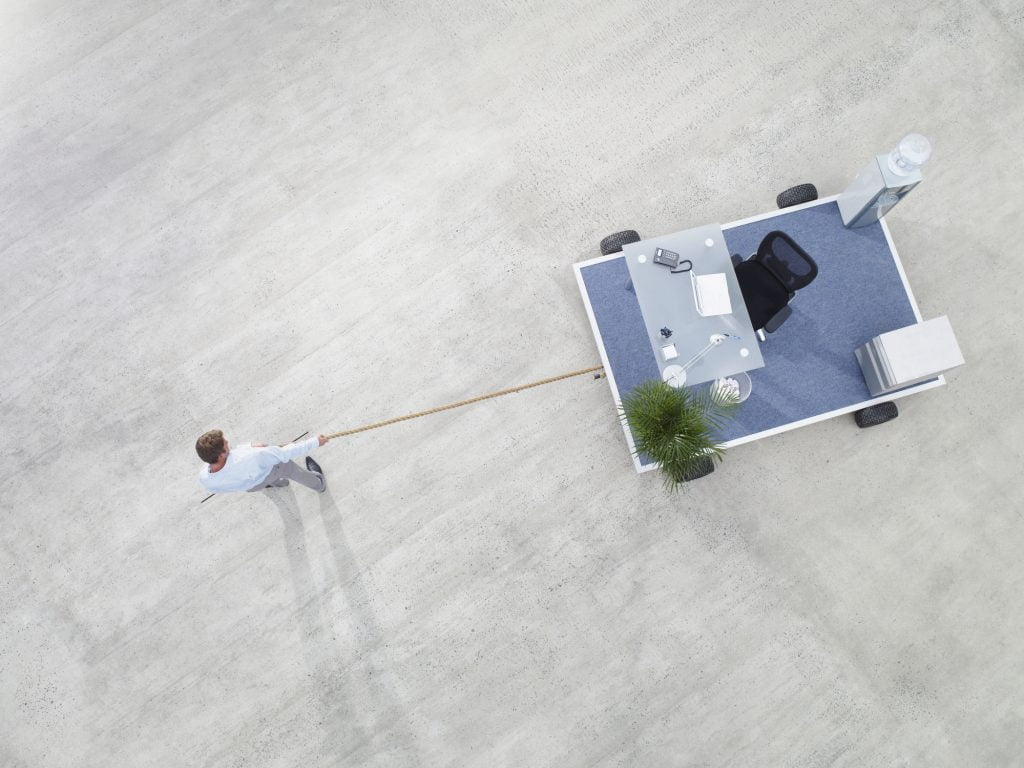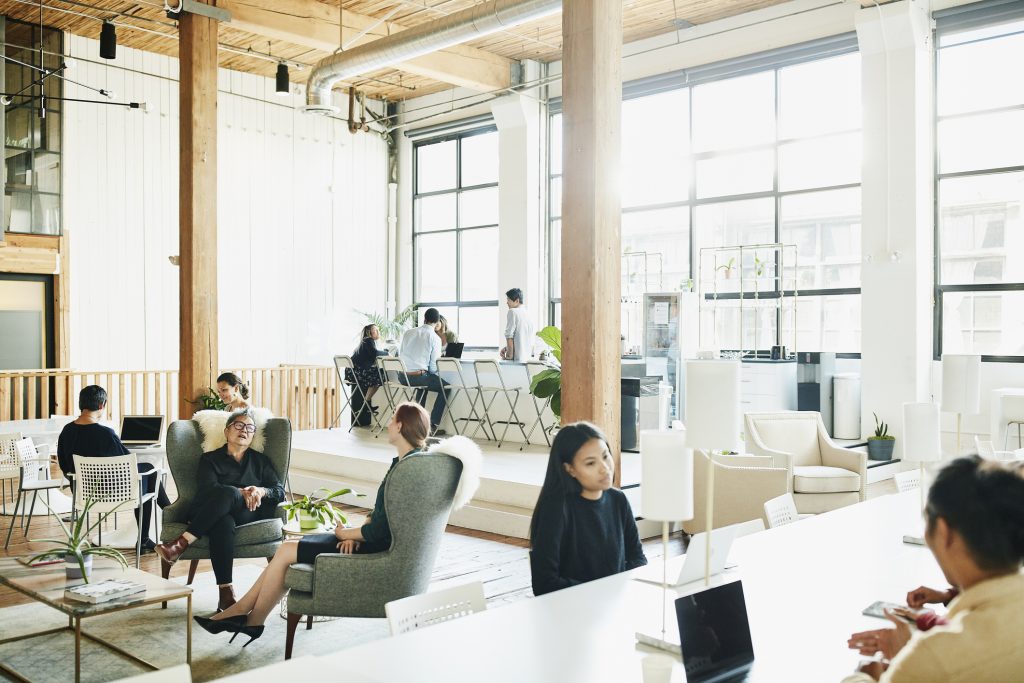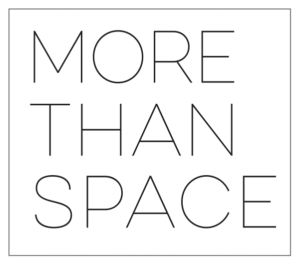We are hearing statements like hot-desking is going to be a thing of the past, more people will work from home for at least part of the week, and offices to stagger start and finish times. While we wait to see how things unfold, one thing we do know is that social distancing is set to stay for some time yet, either until the coronavirus dies out, or more likely until a vaccine is found – which could be several years away.
Even when restrictions are released it is likely that people will need to permanently change the way they interact, such as keeping an appropriate distance from each other and improving hand hygiene. But what does this mean for workplace design?
CHANGED OFFICE LAYOUTS.
If the focus is on reducing close contact then will we see a move away from the open-plan layout, or is that financially impractical and we need to work with what we have and extend our creative minds further?
Easy solutions that can be implemented immediately includes one-way traffic flow, avoiding the use of small meeting rooms, and ensuring that desks allow for a minimum 1.5 metres between people, with the addition of screens for those people sitting at desks facing each other. Longer term changes could include widening corridors and doorways, the use of operable walls to increase the size of meetings rooms to accommodate larger groups and rethinking how communal spaces work.
What about offering a fully flexible office that can change with daily (even hourly) needs? Mobile furniture (including screens) allows this to happen. Need to expand or shrink the size of a team quickly? Done. Need to set up a temporary meeting room? Done. Need to wheel over to attend a video conference or a brainstorming session? Come on over. Portable battery packs that can last all day are available, meaning office layout possibilities are endless.

IS THIS THE END OF HOT DESKING…WTF???
Hot desking has coped a bad rap due to its apparent increased potential to spread germs through shared facilities. But what about the argument that in offices with assigned seating, desks have been shown to be dirtier. That’s because cleaning crews are typically instructed not to touch anything on a person’s desk. In unassigned environments the desks can be cleaned thoroughly every night and are may be more sanitary.
Maybe rather than banning hot desking, why not allow people the choice to choose a space for any given day, with through cleaning between shifts. Assigning lockers, keyboards and mice could further reduce the potential for the spread of germs.
Paper placemats for desks that are then thrown away (for recycling of course) at the end of the day could be an option. They also provide an impromptu sketching opportunity for those who are so inclined (bring your coloured pencils)!
STAGGERED START TIMES
Workers making their way into the office at different times throughout the day would lessen the number of people in the workplace at any one time, as well as reducing the potential spread of coronavirus on peak hour public transport (something that hasn’t really be spoken about). Employees could potentially be split into groups depending on what department they are in or project they are working on – essentially letting workers back in shifts on a timetable. In between shifts, areas could be thoroughly cleaned, and furniture reconfigured if needed.
FLEXIBLE WORK OPTIONS
This pandemic has forced people to become more comfortable with video conferencing and assured companies that formally had reservation about flexible and remote working options, that it can indeed work and work well. Working from home at least a few days a week seems to be set to become part of the new norm.
However, while the option to work from home may be appealing to many, we are social beings and we work best together. When we are together, we share ideas, draw inspiration from each other and form valuable, long-term relationships. While COVID-19 may alter the future of work, the office will still likely remain at the heart of this future.
People in designated teams could come into the office on assigned days. That way everyone gets a chance of being in the office with their team while still exercising social distancing. If people choose the option to only appear in the office for essential face-to-face meetings, then gathering spaces that have been springing up to make teamwork easier, may become even more important. Indeed, informal meeting spaces may be one of the things that draw employees back to the office because it helps provide a sense of community. There will be a higher value placed on spaces where we come together – places that are people-centric, promote collaboration and are engaging (oh and provide good quality coffee via a “tea lady”).

STRICTER HYGIENE…LETS CLEAN IT UP PEOPLE!!!
There are several ways design can help improve hygiene in the workplace – from better access to sanitiser and hand washing opportunities, to clever material choices and handsfree technology.
Antimicrobial finishes and fabrics used in healthcare and laboratories may migrate into offices. Smooth surfaces that are easy to wipe will be preferable to textured or porous ones that could harbour germs (ick!). Some old metals may experience a revival (not talking about Motorhead or Iron Maiden). Copper and its alloys — including brass and bronze — have been shown to be essentially self-sanitising and able to kill bacteria, perhaps even viruses.
Sensor-activated controls reduce the number of surfaces that need to be touched in an office. Stayed tuned for automatic doors using motion sensors or facial recognition, voice-activated or smart phone ordered elevators, and hands-free light switches and temperature controls.
IMPROVED AIR QUALITY
Air systems that recirculate air are common (a horrible thought). We need to consider ways to ventilate more with outdoor air to dilute airborne contaminants and lower transmission opportunities. Operable windows, where possible provide a simple solution for letting in more outdoor air.
Because viruses survive better in low-humidity environments, tweaking systems to obtain an optimal range of 40 to 60 percent humidity is a good idea. Portable humidifiers could offer a quick solution for older buildings.
As we return to the workplace, we need be proactive and create healthier environments with reduced opportunities to transmit germs and viruses. This will be a change from “business as usual.” What remains to be seen is if COVID-19 has long term impacts on office design or if our memories and motivation wanes over time or if it is just financially not viable, and we return to “business as usual”. Only time will tell. In the meantime, lets see where this journey takes workplace design and see what wonderful new innovations are born.
